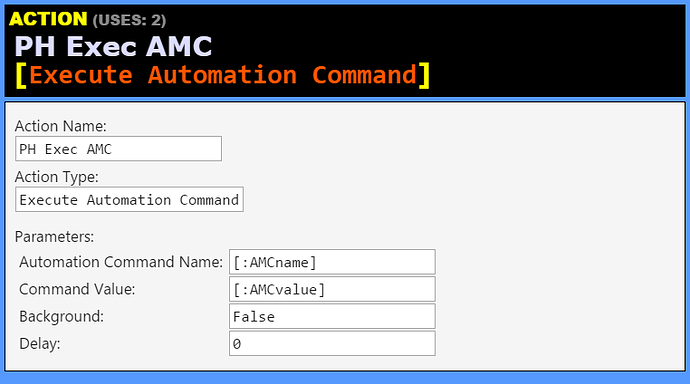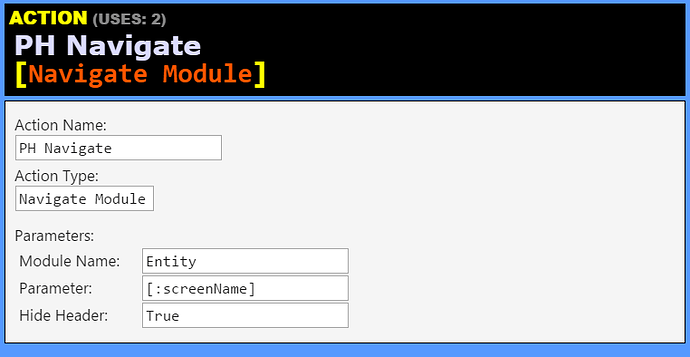#Actions
##PH Exec AMC [Execute Automation Command] (Action)##
| Action Name: | PH Exec AMC |
| Action Type: | Execute Automation Command |
###Parameters:###
| Automation Command Name: | [:AMCname] |
| Command Value: | [:AMCvalue] |
| Background: | False |
| Delay: | 0 |
##PH Navigate [Navigate Module] (Action)##
| Action Name: | PH Navigate |
| Action Type: | Navigate Module |
###Parameters:###
| Module Name: | Entity |
| Parameter: | [:screenName] |
| Hide Header: | True |
##PH Refresh Custom Report Widget [Refresh Custom Report Widget] (Action)##
| Action Name: | PH Refresh Custom Report Widget |
| Action Type: | Refresh Custom Report Widget |
###Parameters:###
| Widget Name: | [:widgetName] |
| Report Name: | [:reportName] |
| Report Parameters: | [:reportParms] |
| Date Filter: | [:dateFilter] |
##PH Store Setting [Update Program Setting] (Action)##
| Action Name: | PH Store Setting |
| Action Type: | Update Program Setting |
###Parameters:###
| Setting Name: | [:settingName] |
| Setting Value: | [:settingValue] |
| Update Type: | Update |
| Is Local: | True |



